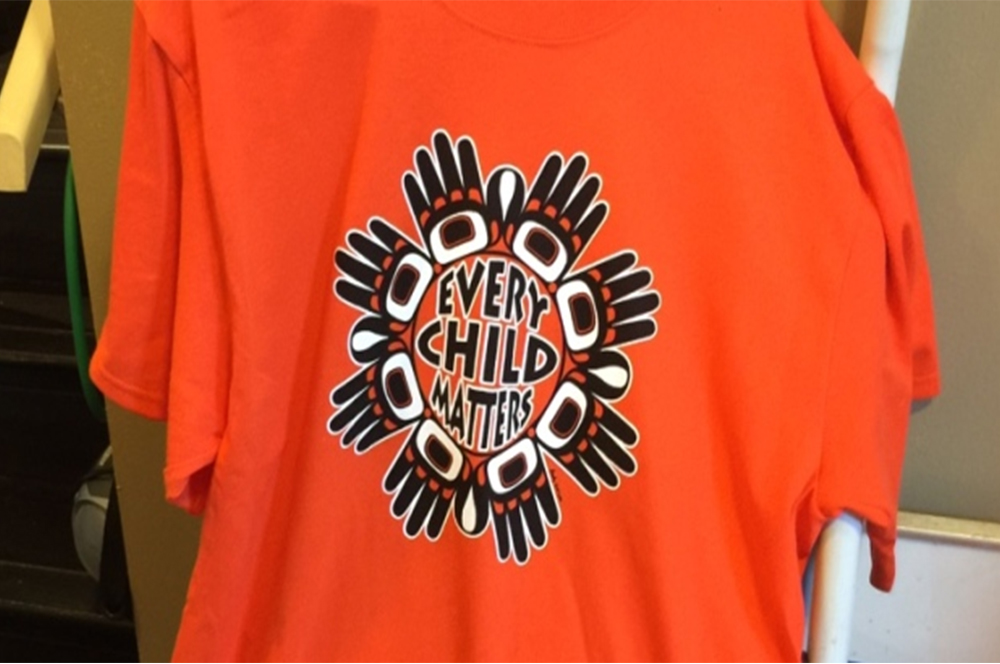For Patricia Lessard, the past six weeks have been hectic — but she says it's all worthwhile.
She and her company, Leading Edge Promo, are supplying T-shirts for this year's Orange Shirt Day, a day to remember the trauma Aboriginal people faced and continue to face because of residential schools and to promote reconciliation.
While she says she has distributed thousands of T-shirts across the country, getting T-shirts to everyone who wants one has been a challenge.
"I literally grabbed a handful of T-shirts from my screen printer, brought them to my house, and people are coming to Langley and grabbing shirts," she said.
Lessard says Orange Shirt Day events — which officially fall on Saturday, with others being held Friday and Monday — are growing in popularity.
However, she says it can be difficult to find official shirts, produced either by the Orange Shirt Day organization or participating First Nations.
Shirt makers say the proceeds from sales of those shirts support reconciliation activities and Aboriginal communities.
Meaning of orange most important thing
Orange Shirt Day participants wear orange in honour of event founder Phyllis Jack Webstad, a Stswecem'c Xgat'tem First Nation elder.
On her first day of residential school, staff stripped her of her brand new orange shirt and she never saw it again. She says the colour now reminds her of how her feelings didn't matter at the school.
On Friday, the Vancouver School Board will hold a variety of events to remember the trauma that Webstad and 150,000 other Aboriginal children suffered.
Vice-principal of Aboriginal education Chas Desjarlais says there has been lots of interest in the shirts from parents but also lots of questions about where to get them.
She says the VSB has been pointing them to online sales for the past three weeks.
But ultimately, she says, not having a shirt isn't the end of the world: wearing any orange clothing is great and students can even wear armbands or ribbons.
It's the meaning behind the colour orange that is truly important, she explained.
"We need to understand why it's significant and the harm of residential schools and how it impacted survivors' sense of self-esteem and well-being," she said.
"This is just one bit we can do to honour those survivors' experiences. So, we need to learn our history."
Sto:lo also offering shirts
In addition to the official shirts, many groups are printing their own versions for local Orange Shirt Day events, including Sto:lo First Nation in Chilliwack.
Sto:lo artist Jared Deck designed the shirt, which features an eagle guarding its two fledglings and an egg.
Two of his children, eight and 11 years old, will be learning about residential schools thanks in part to Orange Shirt Day and he's glad they will be exposed to that history at a younger age.
"I haven't really told them about it, not until recently," he said. "They've heard little bits here and there, so hopefully [they get] a little more awareness and maybe it'll bring up some issues that I can talk to them about."
Deck's shirts can be bought at the Sto:lo gift shop or online. Proceeds from the shirts will go toward the Nation's youth mentorship fund.
As for the official shirts, Lessard says while she is happy with distribution efforts, she feels there needs to be more awareness of Orange Shirt Day and what it stands for.
She feels the event's profile could be boosted by a partnership with a retailer and once this year's events wrap up, she says she will try to strike such a partnership.

